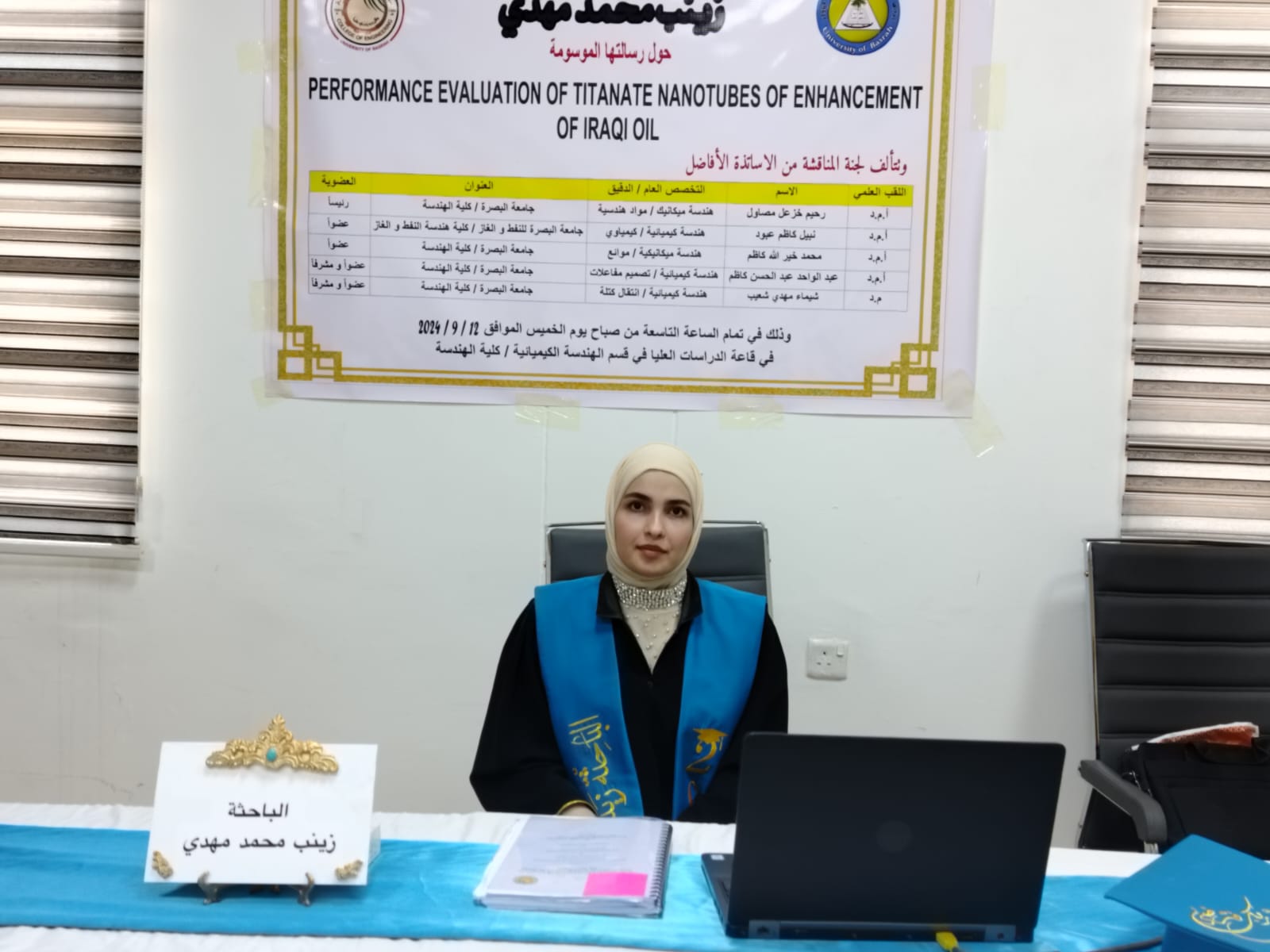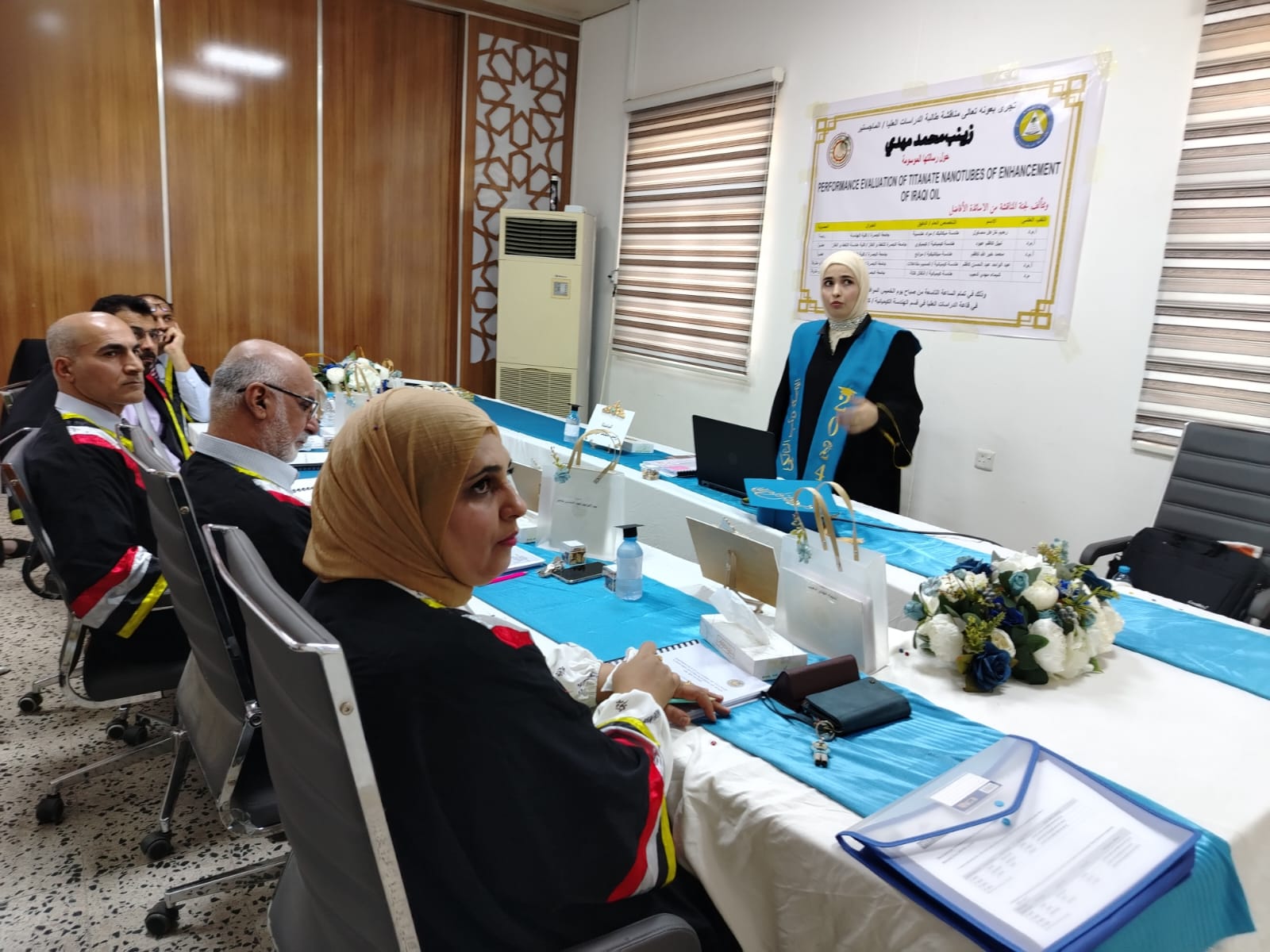
The master's thesis of the student Zainab Muhammad Mahdi was discussed at the University of Basra, College of Engineering, Department of Chemical Engineering, entitled "Evaluation of the performance of titanate nanotubes used in improving Iraqi oil" and includes
In light of the growing worldwide need for crude oil, it is imperative to enhance oil production via cost-effective means. Enhanced Oil Recovery (EOR) methods refer to a collection of sophisticated technologies that may be used to augment the production of oil from a specific oil resource. Nanomaterials are used in several oil industry operations, such as exploration, drilling, cementing, reservoir completion, production, and processing. Several studies have been conducted on nanoparticles such as magnesium oxide, aluminum oxide, zinc oxide, zirconium oxide, iron oxide, and nickel oxide to explore their potential in altering wettability, decreasing interfacial tension, and activating EOR processes.
In the present study, samples of crude oil obtained from the major petroleum fields in Basra, such as Majnoon, Zubair 1, North Rumaila, Nahran Omar, and West Qurna 1, were titanium oxide nanoparticles (TiNP) and nanotubes (TiNT) were used as additives to boost the viscosity and (API) of Iraqi crude oil, either for enhancement or medicinal reasons. The effects of different concentrations of nanoparticles (0.001, 0.002, 0.003, 0.004, 0.005, and 0.1 wt%) on the efficacy of systems aimed at decreasing viscosity, density, specific gravity, surface tension, interfacial tension, and pour point were examined. Furthermore, the research investigated the subsequent increase in API. The nanotubes exhibited outstanding performance when the viscosity of the Majnoon field had a 37% drop, which was notably more pronounced than the impact seen in the other fields, namely Zubair1, North Rumaila, Nahran Omar, and West Qurna1. The surface tension of these fields dropped by 15.5%, 14.5%, 15.1%, 18.6%, and 15.7%, respectively, when 0.1 wt% of TINP was used. In a similar manner, the inclusion of 0.1 wt% of TINT led to decreases in surface tension of 26.07%, 19.7%, 23.4%, 23.6%, and 19.6%,was especiallyevident in the instance of Majnoon, where TINP led to a decrease of 22.3%. respectively. When considering interfacial tension, it was seen that TINP was not as successful as TiNT in decreasing interfacial tension. This was especially evident in the instance of Majnoon, where TiNP led to a decrease of 22.3%. However, TINP proved to be more efficient than TiNT in decreasing the density-specific gravity and pour point percentage. In Majnoon, there Zubair 1oticeable 4.1% reduction in density. In Qurna 1, the specific gravity of Majnoon, Zubair1, North Rumaila, Nahran Omar, and West Qurna1 rose by 4.3% when nanostructures were introduced. The API values for TiNP were 23.5%, 19.5%, 17%, 22.4%, and 21.2%, whereas for TiNT they were 15.15%, 14.8%, 15.4%, 15.6%, and 8.2%. at a concentration of 00.1 wt%. t percent. In Majnoon, the pour point of TiNP fell by 14.8% at a concentration of 0.1wt%. Similarly, the addition of 0.1% TiNT resulted in a 9.9% decrease in pour point, surpassing the reduction seen in other areas.








